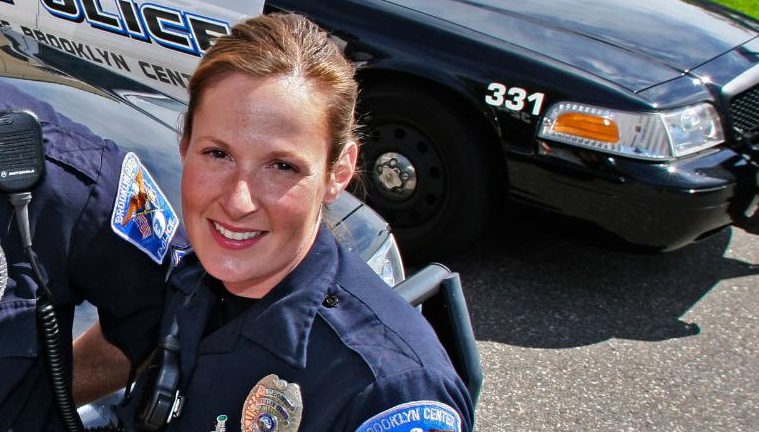
How could that happen? The question that even law enforcement officers ask after a controversial shooting may never have answers. What we know about the human mind and body can provide some potential insights into the shooting of Daunte Wright by veteran Brooklyn Center, Minnesota officer Kim Potter.
On New Year’s Day 2009 transit police at an Oakland station responded to a disturbance and detained Oscar Grant. While Grant was prone and officers attempted to restrain him, Officer Johannes Mehserle drew what he mistakenly thought was his TASER and fired a round from his duty firearm into Grant, killing him.
In 2015 a Tulsa reserve police officer, Bob Bates, shouted “TASER” before shooting Eric Harris who was fleeing from an undercover operation. Bates is heard after the sound of a gunshot saying “I shot him, I’m sorry.”
There have been other mix-ups of less notoriety. Given the frequency of these weapons drawn at the ready but rarely fired, although no consolation to survivors on either end of the gun, such fatal errors are rare.
As a strong advocate of letting investigations take their course, detailed commentary is premature. But the questions that the public has are urgent. Demands for quick answers are prompting police leaders to release information quickly, a decision necessary in today’s environment, but seldom wise from an investigator’s standpoint. Police Chief Tim Gannon released a portion of the body-worn camera video of the incident, along with his assessment that the shooting was an accidental discharge. Both Gannon and Potter have resigned.
Typical immediate analyses will include blaming the department for poor training. If there is a training deficit at the root of this incident, it must be reevaluated in the light of human performance. As we look at what we know about the event – and there is surely much we do not yet know – it is clear that the limitations of human biology are at play.
When the brain perceives a threat to its body or identity, it kicks in brain chemistry that creates significant changes in the way the muscles, vessels, and nerves of the body perform. The awareness of a threat comes from the five senses, and how those sensations compare to the experiences of the person that are filed away in the conscious and subconscious mind.
In this case, the officers were at high alert. Daunte Wright – described in many news articles as being shot on a traffic stop – was wanted on a warrant for failure to appear on a gun-related charge that had resulted from a contact with Minneapolis police. Warrants are not discretionary for officers. Officers would expect the very real possibility that this person, who had already been involved in a firearms-related offense and was not cooperating in the disposition of that charge, would be in possession of a firearm and would resist. This observation is not made to imply that Wright is to blame for his demise (although compliance would have created a much different outcome) but to describe the origin of the officers’ threat perception.
No training is going to keep the brain from doing what the brain does. With a perceived threat the senses can change. Rather than becoming categorically more acute, the senses actually become more selective, unwilling to spend the body’s resources on irrelevant inputs. Vision becomes focused on the highest potential of threat. In this case, having a resistive person attempting to get back in their vehicle would focus attention on the suspect’s hands. Why would a person attempt to wrest themselves away and get back in their car? Did they intend to ram the officer’s car or assault the officer with the open car door? Might they have a weapon they want to get their hands on? Is there evidence they want to try to destroy? Are they willing to drive dangerously in an attempt to flee?
The human eye is not a camera lens, recording everything in the same focus. When one wonders why the officer simply didn’t see that she had a firearm instead of a TASER, the answer is that her brain focused her sense of sight elsewhere.
Another chemical change that the brain commands is the course of blood in the body. When preparing for the classic fight or flight, the body depends on the large muscle groups. Blood, whose chemical composition is changing to adapt to possible injury, is routed to oxygenate the muscles most likely to be used in a struggle or pursuit. This robs, to some degree, the blood supply to smaller muscles like the fingers. Nerves that could sense pain are dulled in anticipation of combat. It is likely that the officer could not feel the difference between the heavy firearm and the lighter, curvier contour of the TASER.
Research shows that the decision to deploy a weapon may take less time than the decision to stop deploying the weapon. Another decision that takes time – and we measure time in milliseconds during these fast-moving events – is the transition from lethal force to the less-lethal force of the TASER or other tool. The decision is complex. Was the other officer going to deploy a TASER? If so, Potter would have been ready with her sidearm, because less-lethal force with another officer present is not used unless lethal force is available should the TASER fail. If Potter’s thinking process was first to draw her sidearm, then switch to a TASER after reassessment, she may have thought that she had already switched to the TASER. We have all planned to grab the car keys after we get something out of the backseat, then shut the door locking our keys in. This example is nowhere near the consequence of Potter’s thinking glitch, but it illustrates the human mind’s potential to fail us when sequencing thoughts and behaviors in rapidly changing circumstances.
Our understanding of human limitations has not caught up with the ideology of our expectations. Heroes aren’t allowed mistakes.